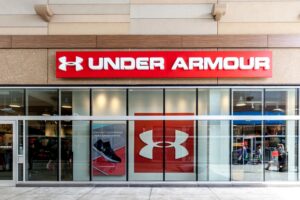
©alvarez via Canva.com
November 19, 2024
How Might Real-Time Stock Visibility Impact Retailers’ In-Store Traffic?
Costco is testing a “search warehouse inventory” function on its mobile app that lets customers check local on-hand inventory, according to FOX Business. Reportedly, the tool is being beta-tested with only a select group of customers.
For those with access to the tool, consumers can click “warehouse” at the bottom of the Costco app. Then, they can use the search bar to look for specific products by name or description to find out if they are available at their local warehouse.
A reliable source familiar with the matter indicated that Costco is fine-tuning the concept to include adjustments to safety stock levels, selecting specific products for participation, and more. The tool is likely to stay, although not necessarily in its original form.
While Costco has historically refrained from publishing on-hand inventory in its 39-year history, this new initiative aims to make shopping more convenient. But given Costco’s unique appeal, will the feature resonate with its customer base or turn out well for the retailer?
Known for its “treasure hunt” atmosphere, Costco’s value proposition is built on the unexpected finds shoppers discover during a trip.
“Nice thing about Costco is that, because of their membership model, there is little or no ‘inventory disappearance,’” Greg Buzek, president of research firm IHL, shared. “Also, [they have] a lot fewer items to track than other retailers. So, accuracy is much higher [than with other retailers]. But they use inventory robots that are roaming the aisles all day giving updated cycle counts as well.”
Buzek also explained the larger implications of on-shelf availability, noting that globally, retailers lose a staggering $1.77 trillion in sales due to out-of-stocks and overstocks. Though accurate inventory visibility is more achievable for Costco due to fewer SKUs, stronger supply chains, and tools like inventory robots, for many retailers, inventory accuracy can still pose challenges, especially among those facing supply chain and data accuracy issues.
According to Buzek, 96% of sales laggards — those with flat or declining sales in 2024 — claim they “have issues with the availability of real-time inventory accuracy” compared to only 7% of sales winners (those growing 2024 sales by 10% or more). Furthermore, 71% of the laggards report problems with data accuracy compared to 22% of sales winners.
“The challenge for laggards leads to supplier issues,” Buzek explained. “96% of sales laggards report issues with their suppliers vs. only 10% of sales winners.”
Fellow BrainTruster Neil Saunders, managing director of research firm GlobalData Retail, also shared his thoughts on adding an on-hand inventory search function: “Several retailers already show whether products are in stock. IKEA is one of them. The reason IKEA put this in place is because consumers will often drive long distances to [an IKEA store] and want to know in advance whether items are available or not. IKEA has a pretty good handle on inventory levels, so the system is usually pretty accurate. The one issue is that while making their way to the store, someone else could buy the available stock. So, IKEA also advises when products are ‘running low’ by flagging this on the website. This allows consumers to make informed decisions.”
Saunders noted that Best Buy has a similar tool that “shows whether products are in stock by flagging whether they are available for collection.” He explained that the system is “pretty accurate” because the company’s shrink is relatively low, with some stock kept locked away or in the stockroom. “One little-known trick is that on the electronic product labels on display stock in Best Buy stores, you can see whether items are in stock or not as they have a little tick or cross to indicate,” he added.
Additionally, Walmart’s website currently shows customers what products they can buy in-store. “The accuracy is reasonable, though with so many SKUs, it can occasionally be hit and miss,” Saunders stated. “The other issue, which also applies to Target, is that when stock is low, it can be difficult to find, especially if another customer has put back an item in the wrong place. This happens quite a lot and can be frustrating.”
To evaluate whether or not this strategy will work for Costco, it helps to consider a few factors:
- Customer satisfaction: Customers may want to know that an item is not in stock before they head out to the store or attempt to order it online.
- Risk of losing the sale of other items: Will customers not go to a store and forego purchasing other items because one item is not in stock?
- Transparency: How helpful would it be if the retailer posted the estimated date when an out-of-stock item would be available again at the selected store?
- Perpetual inventory and supply-chain accuracy: Are the information systems and ancillary processes of retailers who post on-hand available inventory by store or fulfillment center accurate to the unit?
Food for thought: Providing accurate on-hand inventory could be essential for some retailers, insignificant for others, and even a potential drawback for certain brands. For example, Costco shoppers are famously known for making unplanned purchases; they might enter intending to buy $100 worth of essentials and leave with double that in impulse buys. In this context, would a customer really skip a trip to Costco due to one out-of-stock item or even bother to check inventory on an app before visiting? While the new feature offers a level of convenience, it raises questions about whether Costco’s typical shopper would actually take advantage of it — or if it might even deter them from browsing the aisles, where much of Costco’s appeal lies in unexpected discoveries.
Conversely, consider a do-it-yourselfer heading to Home Depot. If this customer checks the app and finds that the item they need is out of stock, the outcome might be quite different. Unlike at Costco, where the allure is often in the spontaneous finds, a trip to Home Depot is often targeted and purposeful. If the desired item isn’t available, this customer is more likely to avoid the trip entirely, and without that visit, Home Depot could indeed miss out on additional sales from impulse purchases.
Discussion Questions
Is displaying on-hand inventory by location on a mobile app or online good, bad, or indifferent?
Does the concept work better in certain retail formats than across all retail?
Poll
BrainTrust
Melissa Minkow
Director, Retail Strategy, CI&T
Jeff Sward
Founding Partner, Merchandising Metrics
Mark Ryski
Founder, CEO & Author, HeadCount Corporation
Recent Discussions







Having real-time inventory data is extremely useful for shoppers as it lets them know whether something is in-stock before making a trip to the store. This is particularly valuable in two main cases. First, stores that have long average drive times, like IKEA; there’s nothing worse than driving 50 or more miles to find that what you want is not in stock. Second, for the purchase of specific items which are not easily substitutable. Regardless of whether retailers use this functionality, all should have a single, unified view of inventory as it powers other functions like BOPIS and store based fulfillment.
Making real time in-store inventory available to consumers will soon be table stakes if it is not already. It encourages consumers to visit a store and will not deter the treasure hunt mentality. If they are already shopping on-line for specific items then having real time visibility to store level inventory will encourage them to visit and shop. In the next 2-3 years, in some retail segments not having this feature available for shopping and BOPIS functions will be a detriment to customers shopping a brand.
Displaying on-hand inventory is good – if it’s accurate; it’s really bad if it isn’t. When a shopper makes the effort to check inventory online, and then drives to the store only to discover the product is out-of-stock and can’t be found, they are rightly double-pissed. One for wasting time on the retailer’s website and two for wasting time visiting the store. Breaking this trust can have long-term negative impacts.
But inaccurate online inventory also hurts retailer’s sales. For example, I was interested in purchasing a wrist watch style golf GPS from a golf equipment retailer. I found the item I was interested in, but the online inventory for the store closest to me indicated that they were out-of-stock. Knowing that these online inventory systems are often wrong, I called the store to ask if they had the item in stock. The sales associate’s answer: “Yes, we have about 20 of them in stock. You can’t really trust the online in-stock we show on our website.” A sad, but honest answer. Had I not made the effort to call, the sale would have been lost.
I’m really passionate about this becoming a feature of apps and websites moving forward. What many retailers don’t realize is that consumers often assess their satisfaction levels with stores based on how quickly/efficiently they’re able to get everything they want. Losing out on a customer’s trip can ultimately result in higher satisfaction and sales for that customer because when they do go, they’ll get what they want.
The article makes a great point about the difference between “treasure hunt” shopping and a trip that is “targeted and purposeful”. The ability to confirm inventory availability ahead of time is critical for targeted and purposeful trips. And could work against the retailer who is a treasure hunt headquarters. Having said that, I would encourage Costco to pursue making the inventory information available. It would be another feather in their cap in confirming their reliability as a go-to destination. In Costco’s case, it might mean a trip is deferred, not abandoned altogether.
If a cusotmer is “burned” more than once from a particular retailer over inventory issues, what is the likelihood that they will come back? (Rhetorical question!) The Costco example is a model for other retailers who want to be transparent about their inventory levels. If a customer goes online to check inventory, and the retailer is out, that is the perfect opportunity to offer delivery. If they can’t get what they want now, at least make it easy for them to get it at all.
I’ve seen companies get an ROI on their order management system (OMS) investment (an OMS often serves as the enterprise inventory availability hub) in just 30 days because accurate inventory reduced canceled orders and customer service costs so much, and helped capture more sales. Even a large big box retailer saw an ROI in 5 months. What’s more, showing actual quantities has further increased conversions. At the end of the day, making a promise online, whether a customer places and order or visits your store, then keeping it, provides a great brand experience. Failing to keep your promise, doesn’t.
Inventory visibility is quickly becoming the standard. For Costco, known for its “treasure hunt” shopping experience, this could alter how customers engage with the store. While having access to stock information is useful, Costco’s challenge will be preserving the element of surprise that drives impulse purchases.
People go to Costco for one thing and end up buying five other things. If customers know an item is out of stock, they might just skip the trip entirely and miss out on impulse purchases that drive revenue.
Saying that, for stores like Home Depot or IKEA, it’s a no-brainer—customers need specific items and want to avoid wasted trips, so displaying on-hand inventory is a blessing.
I think this concept works best for stores with targeted shopping like hardware or electronics retailers. For stores like Costco, known for their “treasure hunt” experiences, I am curious how they adapt to this trend while staying true to their element of in-store surprises.